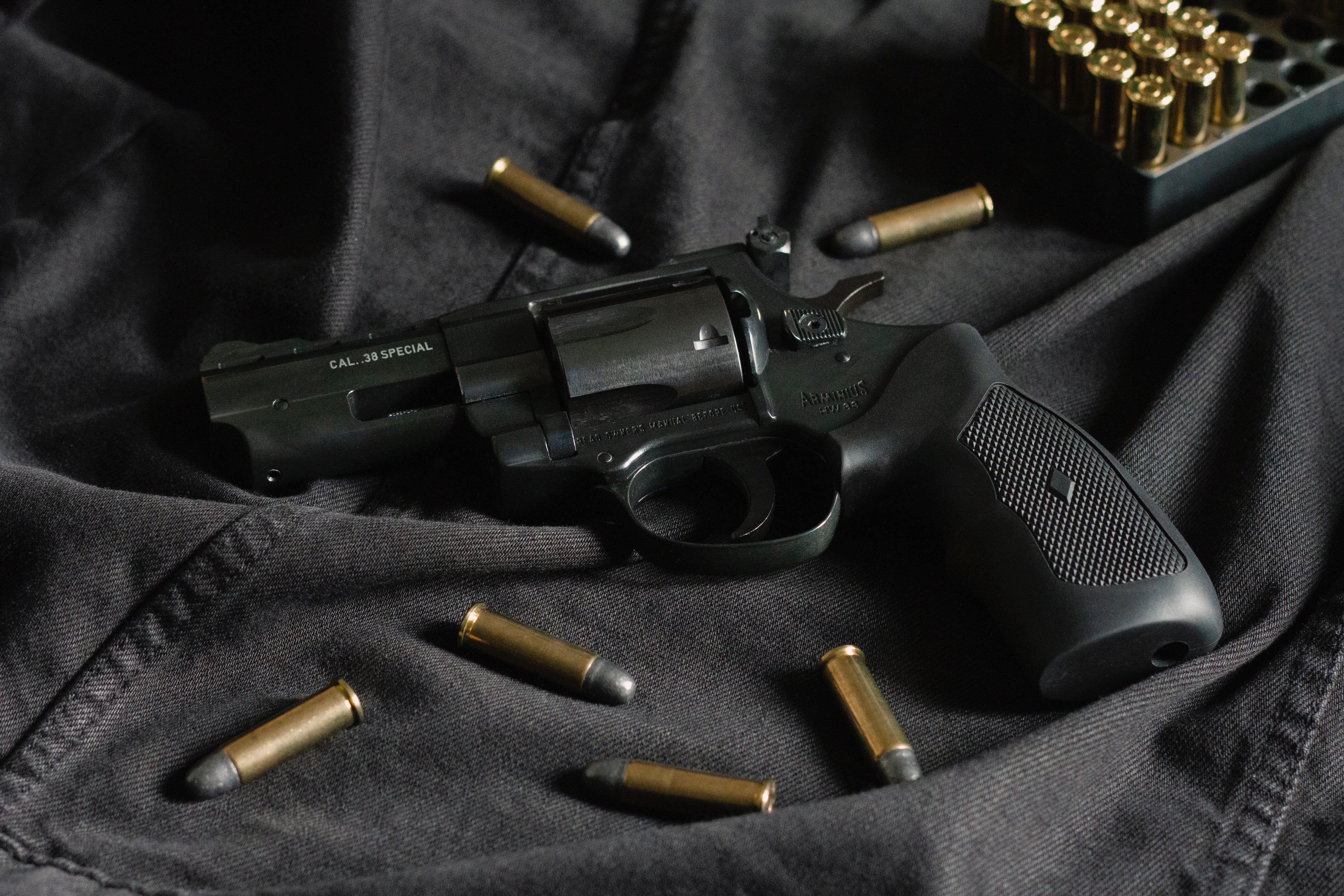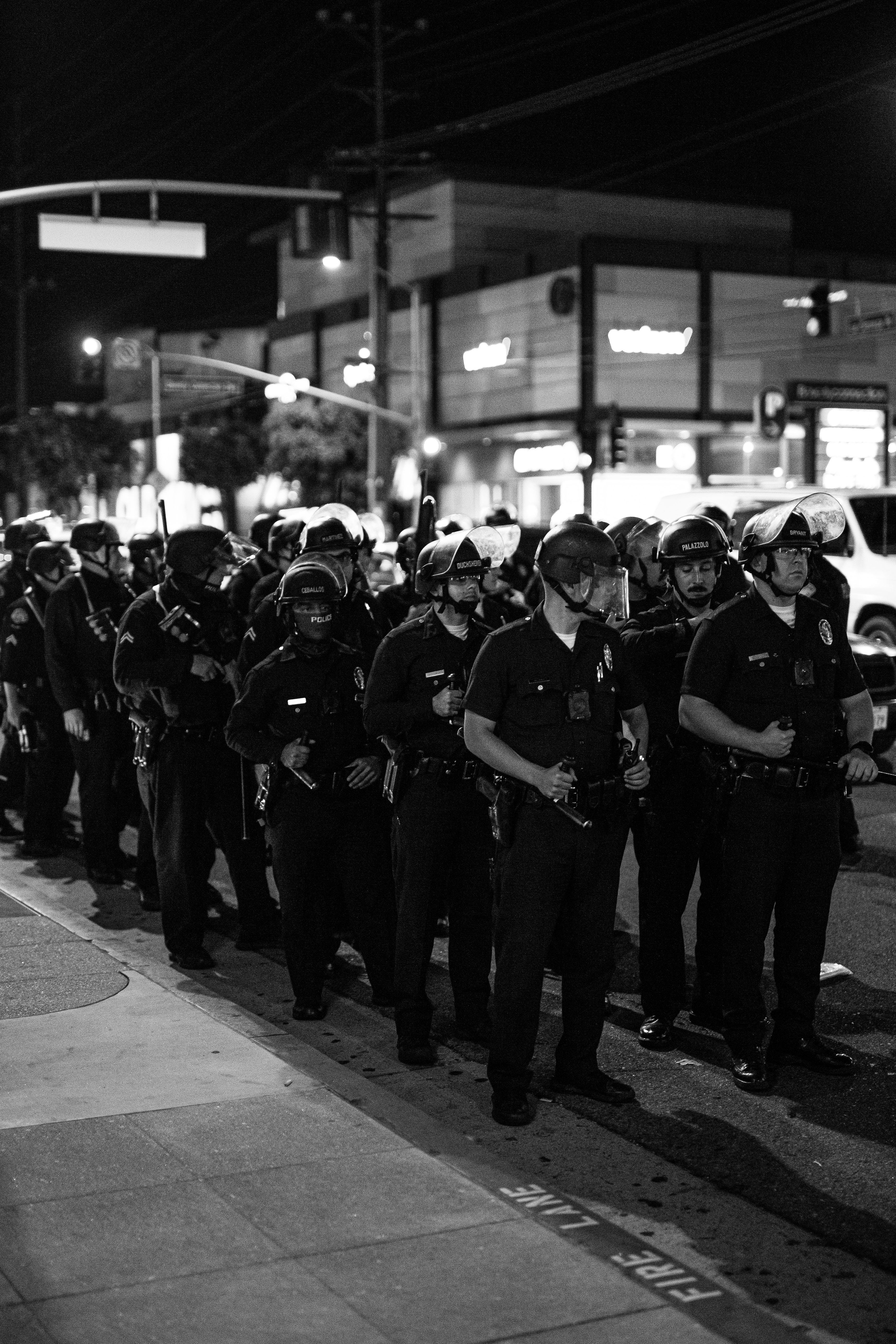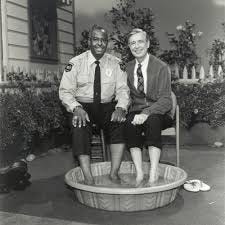Everyone will be safer, even the cops

In 2020, police killed over 1,000 Americans, possibly as many as two thousand. According to mappingpoliceviolence.org, 28% of the victims have been African-Americans — who make up only 13% of the population — but people of all kinds die too often in police encounters.
This rate of police gun violence is more than ten times that of any European country. Fear between police and citizens makes our streets meaner, harsher places for everyone, including the police themselves.
After the murder of George Floyd in Minneapolis, the Black Lives Matter movement put out the slogan ‘Defund the Police.’ While far too much funding indeed goes to law enforcement, the slogan was widely misinterpreted as ‘Abolish the Police,’ which made the idea a nonstarter in most communities and violently resisted by police departments.
A more effective proposal would be ‘Disarm the Police.’ Few people advocate getting rid of police entirely — though some do — but for at least five reasons, we would be much happier and safer if police were only armed for very special assignments.
1. Too traumatized to handle guns
When a cop shoots someone, they almost invariably avoid punishment or even discipline by saying, “I feared for my life.” And strange as it seems, they are usually telling the truth. According to Resmaa Menakem MSW, author of My Grandmother’s Hands: Racialized Trauma and the Path to Mending Our Hearts and Bodies, most Americans have been traumatized by violence their families experienced in their home countries or here.
But police are a specially traumatized group. They regularly observe traumatic situations at work. They inflict trauma on others, which is itself a form of trauma. They are trained and taught to live in fear of violence from the people they police. As a result, they fear for their lives and over-react accordingly.
Their traumatized fear is strongest when dealing with Black and other dark-skinned people. Menakem describes the racist beliefs many officers subconsciously hold about Black bodies: that they are invulnerable to injury, have superhuman strength and do not feel pain.
After Ferguson, Missouri cop Darrell Wilson got into a fight with and killed Mike Brown, a large but unarmed Black 18-year-old, he told a grand jury: “When I grabbed him, the only way I can describe it is I felt like a 5-year-old holding onto Hulk Hogan.” (Wilson is 6’4” tall and weighed 220 pounds at the time.) And after shooting Brown several times, Wilson testified that, “It looked like he was bulking up to run through the shots, like it was making him mad that I’m shooting at him.” So, he shot Brown again, this time fatally. Was that rational, or was it trauma-driven paranoia?
We read constantly about Black men shot by police who mistook a cell phone, a sandwich, a cigarette lighter, or a wallet for a gun, and responded by firing up to 40 shots into their victims. Some, like Tamir Rice in Cleveland, have been as young as 12 years old. Some police fear Latino, Native American, and poor white people nearly as much as they fear African-Americans. How can people living with so much fear handle guns safely?
Trained to fear
According to Seth Stoughton, professor of law at the University of South Carolina Law School and a former police officer, police trainers’ heavy emphasis on police safety and the dangers of inattention or hesitation condition officers to shoot before a threat is fully recognized. Recruits are shown videos of officers being killed to impress on them how much danger they face.
Ex-cop turned researcher Arthur Rizer told Vox.com, that police work often makes officers fear and suspect all civilians. Rizer says many believe “they are ‘at war’ with the public.” He continues, “There’s a ‘me versus them’ kind of worldview, that we’re not part of this community that we’re patrolling.”

2. It’s not the bad apples; it’s the tree
“Police departments blame rogue cops for excessive violence,” Barbara Armacost wrote in Harvard Business Review. “But the problem is organizational culture.” Violent officers “tend to repeat their abusive behavior with impunity.” Some cops have dozens of abuse complaints and several shooting on their records, but still keep their jobs.
“Not addressing repeated brutality,” writes Armacost, “conveys the message that some level of abusive behavior is okay… Certain features of police culture reward aggressive behavior or send a subliminal message that some brutality is permitted or even necessary.”
Police departments emphasize quantitative performance, says Seth Stoughton: crimes solved, arrests made, and tickets written, not harder-to-measure accomplishments, such as dangerous situations defused or avoided. By rewarding aggressive actions — which may even be dubbed heroic — this system can escalate police-citizen confrontations. While officers are rarely disciplined for shooting someone, some have been fired for not shooting.
Police culture idealizes toughness and scorns vulnerability. My friend Jeanette, who does de-escalation trainings with officers, says they are strongly discouraged from talking about their traumas, fears, anger and grief. ‘They’re just supposed to suck it up,’ she says. So, they cannot heal their trauma.
According to Zack Beauchamp on Vox.com, “Officers are taught that the only way to guarantee survival is to dominate the citizens they’re supposed to protect.” Guns contribute to this aura of toughness and dominance, even if they are never fired.
Why would city governments, supposedly representing all residents, embrace violent policing and even occasional shootings? Among many reasons, one stands out. Police have, since their creation in the 19th Century, been given the job of suppressing opposition to the propertied classes who run their cities, and that requires violence.
3. Property above people
According to an extensive report from the Eastern Kentucky University (EKU) Institute of Police Studies, police in America largely started as slave catchers, strike breakers, and guardians of rich people’s property. Protecting property against those without is the main reason we have police, and a major reason they should not be armed.
Policing hasn’t always been all about force. In a chapter called History of Urban Police, UCLA professor Eric Monkkonen reports that 19th Century police performed social service work such as running soup kitchens and finding lost children. Friendly fictional police figures like Andy of Mayberry and Officer Clemmons on Mr. Rogers’ Neighborhood may be based on those early police roles, but by the 20th Century, departments dropped most of the social services to focus on protecting private property (aka “fighting crime.”)

EKU Professor Gary Potter says that, “The use of public police to serve private economic interests and to use legally-ordained force against organizing workers was both cost-effective for manufacturing concerns and politically useful, in that it confused the issue of workers’ rights with the issue of crime.”
In the South, according to the National Law Enforcement Museum, many police programs began as slave patrols. “White Southerners lived in near constant fear of slave rebellions disrupting this economic status quo,” they write. “As a result, these patrols were one of the earliest and most prolific forms of early policing in the South.”
The enforcement of owners’ law against slaves, industrial workers, and the very poor — all of whom were fighting for their lives — was necessarily violent, as it is today. This is why disarming the police is a working-class demand.
4. White supremacist influence
Not all police are racists. But police departments throughout the US have been infiltrated for over 100 years by violent white supremacist groups. The FBI reported in 2006 that, “White supremacist infiltration of law enforcement can result in abuses of authority and tolerance of racism within communities served.”
According to the Brennan Center for Justice, “Internal FBI policy documents have warned agents that the white supremacist and anti-government militia groups they investigate often have “active links” to law enforcement officials.”
In an August 2020 article for t he Brennan Center, Michael German wrote, “There is an unbroken chain of law enforcement involvement in violent, organized racist activity right up to the present.” Members of openly racist organizations serve in law enforcement in over a dozen states. A cell of over 40 Klansmen has been exposed in Kentucky, and an even bigger cell of neo-Nazis have infiltrated the Los Angeles County Sheriff’s Department, where a lawsuit revealed killings, brutality, house trashing, and other acts of lawlessness by sheriffs in the town of Lynwood, CA.
Giving neo-Nazis and avowed racists weapons and legal authority to use them in Black and Brown communities creates violence and despair for people who live in them, in return for an illusion of safety for those who stay away. It is the very definition of racism, state power directed against people of color.
5. Disarming will help the police, too
Police work is hard and dangerous; although statistically safer than farm work, construction, truck driving, and a dozen other professions. Police believe they are in constant danger on the streets, and most believe they need guns to protect themselves. In many situations, though, their guns make them less safe and more stressed.
Social work educator Lori James-Townes wrote on Slate that “Police come armed with tasers, guns and batons, prepared to deploy violence…looking to control and suppress instead of solve problems. They typically escalate a situation.”
Police brutality cases seem the motivation for a number of ambush killings of police officers in the last few years. After the 2016 murders by police of Alton Sterling in Louisiana and Philandro Castile in Minnesota, at least eight officers were killed in revenge attacks, according to the New York Times. Their guns could not protect them.

Police guns kill police, too. An August 2020 article on City and State New York reported that in New York City, the only two officers to die in the line of duty in the last three years were killed by friendly fire, and more than a dozen officers attempted or committed suicide using firearms during that span.
Police bodies suffer from the stress of their combative relationship with the people. A study at the University of Buffalo found that the pressures of law enforcement put officers at risk for high blood pressure, insomnia, heart problems, post-traumatic stress disorder, and suicide. It cannot be healthy to be feared and resented by everyone you meet, to feel constant fear of attack, to fight for dominance or to engage in violent, traumatic behaviors day after day.
Must police be armed?
Police might feel naked without their weapons, but experts believe the vast majority of police encounters do not need to involve force. If police acted more like social or community workers, they would inflict and suffer less stress and violence.
Some towns — like Alexandria, Kentucky — use actual social workers to take many calls formerly handled by officers. They have found unarmed responders reduce repeat emergency calls while also getting residents the help that police officers don’t have the skills, resources or time to provide.
So, many police could be replaced with trained non-cops. But police can also perform more effectively and easily if they back off the need to dominate every encounter. They could start that by putting the guns away.
Police in many European and other countries work without guns and rarely kill or are killed by citizens. In many countries, police have actively resisted plans to arm them, because guns would make their jobs more dangerous.
Police violence supporters will say the USA is a far more dangerous and lawless country, but how much of the danger is self-fulfilling prophecy? If you fear people, treat them as enemies, and put them in desperate situations, they are, of course, more likely to become violent. But changing the role of police would make violence much less likely.
Sociology professor Greg Smithsonian of Brooklyn College believes that disarming police would “change the social compact, producing a different relationship with civilians.” There would be less aggression and bravado, more actual help for people in need.
Social workers do not need guns. Police need to stop thinking of themselves as soldiers, and start acting like part of the community they serve. This transition will take time, but would make police part of the solution and not the problem.
Thanks for reading! Follow me on Twitter, on Facebook or my blog The Inn by the Healing Path. Hire me for freelancing, editing, or tutoring on LinkedIn.
